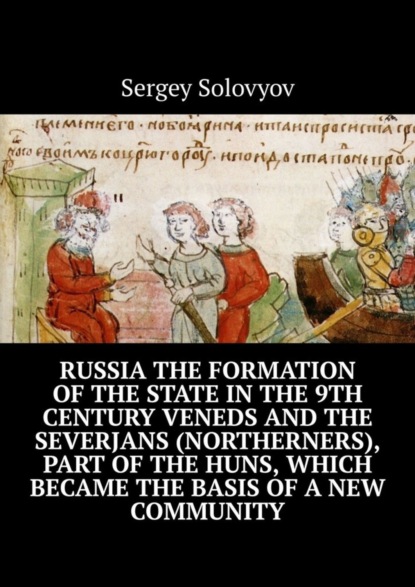
Полная версия:
Russia the formation of the state in the 9th century Veneds and the severjans (northerners), part of the Huns, which became the basis of a new community
– The fortified settlement of Sarym-Sakly – Kizilskiy district (Chelyabinsk region), on the right bank of the Zingeyka river. Discovered in 1987 when analyzing aerial photography.
– Cultural and historical complex Sintashta – Bredinsky district (Chelyabinsk region), on the left bank of the Sintashta river. Discovered in 1972 (found in 1968).
– The fortified settlement of Sintashta 2 (Levoberezhnoe) – Bredinsky district (Chelyabinsk region), on the left bank of the Sintashta river. Discovered in 1990 when analyzing aerial photography.
– The fortified settlement Stepnoye – Plastovsky district (Chelyabinsk region), on the left bank of the Uy river. Discovered in 1987 when analyzing aerial photography.
– The fortified settlement of Ustye – Varnensky district (Chelyabinsk region), on the right bank of the Nizhny Toguzak river near the mouth of the Kisinet river. Discovered in pre-2004
– Fortified settlement Chekatay – Varnensky district (Chelyabinsk region), on the eastern shore of Lake Chekatay. Discovered in 1991 when analyzing aerial photography.
– The fortified settlement of Chernorechye 3 – Troitsk district (Chelyabinsk region), discovered in 1977 on the eastern shore of Lake Chekatay.
Others:
– Nikolskaya 1
– Petrovka 2
– Bogolyubovo 1
– Streletskoe 1 Troitsky district
That is, as you can see, the settlements of the Urals of the Bronze Age, by analogy with Chinese houses, were a kind of fortress houses, maybe several floors, with a courtyard inside a fortress house.

Similar settlements were found in Rostov, this is the famous Liventsovskaya fortress, consisting of two fortress houses. The first inhabitants and builders of the settlement were tribes of the Yamna and catacomb culture of the Don, the military defensive structure dates back to the 17th century BC. The length of the foundation of the Liventsovskaya fortress along the perimeter today reaches 280 meters, and the area of the Karataevskaya fortress is more than 425 square meters. As you can see, this fortress resembles the fortresses of the Country of Cities and the Tulou houses of China.
Weapons, decorations
The horse was a common and important character among the decorations characteristic of bronze combat knives. A stocky horse with a thick mane, large head and sensitively alert ears froze on the top of a crooked knife. A short man grasped the reins tightly and glides on widely spaced skis. This, already famous, sculptural group from the Rostovka burial ground points to one of the most ancient ways of man’s movement in tow after a fast-jumping animal.
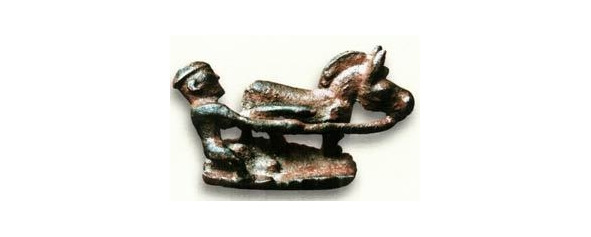
Statuette, a man rides a horse on skis
Elk was also a domestic animal in Siberia. It is known that, until recently, sled and draft moose were widely used in northern Europe. Moreover, it is difficult to say who – an elk or a deer – was tamed before. So, back in the XV century. The moose was a riding animal in the Swedish army, and an engraving from the book of O. Mangus in 1555 depicts an elk carrying a sled with riders. Russian and Soviet zoologist, academician N.M. Kulagin wrote that “according to old legends, moose were allegedly used in Sweden for riding, as if riding on them was so fast that the police had to prohibit the use of moose in order to prevent criminals from hiding from persecution with the help of swift moose”; He also points out that moose in captivity in a stall, if not driven and not allowed to run, die after 2 years, and when used under saddle and harness live up to 35 years. In the 18th century. Swedish couriers used to ride moose in a sleigh, and in the Baltics from the time of Peter the Great, a decree has been preserved prohibiting “moose riding in the city”.

Images of petroglyphs of the White Sea region. A man is skiing for a moose, holding on to the harness.
That is, earlier people as mounts, in the Bronze Age and later used the moose as draft and riding animal. An elk is much larger than a horse, and even a deer, but it does not tolerate heat at all.
Genetic studies of the remains of the Andronovites showed the presence of Y-chromosomal haplogroup R1a1, R1b M73, Q1a and Y-chromosomal haplogroup C (prd M48) and mitochondrial haplogroups U, Z, T, H, K and HV in representatives of the culture. In one 2015 study, the Y-chromosomal haplogroup R1a1a1b2a2-Z2124 and the mitochondrial haplogroup U2 were found, in another 2015 study, the mitochondrial haplogroup A10 * was found in a representative of the Fedorov culture (Tartas-1). The closest to the Andronovites were the representatives of the European Corded Ware culture and the Sintashta culture, as well as modern Indian populations, according to the study by Keyser C. et al. “Ancient DNA provides new insights into the history of south Siberian Kurgan people.”
What did all these peoples call themselves? I would venture to suggest that the Huns or the Ghans, or rather, the Hans, and this is confirmed by the myth of the Gannimede of Asia Minor. Tsar Hunei from Thessaly, as well as the names of the mounds in Russia and Germany, and in Russia it literally means “KUR-GAN” – “the possession of the Gans”, kur-possession, then the Cossack kuren, and the name of the city of Kursk. And in Germany there are also such “Hünegrab” – “grave of the hun (giant)” and “Hünebett” – “bed of the hun (giant)”. In Dutch also – Hunebed – a giant’s bed. It is very likely that it was at this time, and these peoples. Judging by the legends of the Narts and the legends of the Egyptians, the Huns-Hans were the mysterious Hyksos-kings-shepherds, because the cities founded by these tribes in the Nile Delta were named in honor of the distant ancestral homeland – Tanais (Tanis) and Avaris, and here on the historical stage The Uary-Avars, who became the ancestors of the present Avars, came out.
So fortified cities, boat-shaped buckets, axes with bushings of a certain type, meander, swastika, cross, and temporal lobular rings, as well as blackened dishes, ornaments in the form of volutes are all signs of Indo-Europeans who began their migration to the West, East and South from their homeland, Ob and Urals.
Asuras and Vainaras
Asuras in Hinduism are deities of low rank, sometimes called demons, titans, demigods, anti-gods, giants. This is due to the fact that the asuras are in binary opposition to the suras, the gods of Hinduism, similar to the opposition “gods-titans” or “gods-giants” in ancient Greek mythology. In Zoroastrianism, the opposite is true. Asuras there are declared gods, devas – demons.
In the Vedic period, the word “asura” most likely meant “possessing vitality” (to the word asu (“vital force”), M. Mayrhofer etymology). In the Rig Veda, many gods are called asuras – Savitara, Agni, Mitra, Varuna, Surya and others. Asuras are mentioned mainly in the Puranas, they are actively trying to overthrow Indra from the throne and expel the gods from Paradise. Vishnu, Shiva, Shakti and Kartik help the Virgos defeat the Asuras. However, even among the asuras there are positive characters, for example, the King of Bali mentioned in the Puranas.
Thus, the main difference between the asuras and the Rakshasas is that the asuras challenge the dominion of Vishnu, Shiva and Brahma and try to take over them.
Most asuras also have superpowers, which they can develop through performing spiritual practices dedicated to Trimurti, especially Brahma.
In the Ramayana it is also described that the Rakshasas received their bodies as a result of a curse, which can only be overcome by accepting death from one of the Vishnu avatars.
The division of deities into two rival camps is also characteristic of the Avestan religion, where there is an inversion in relation to Hinduism, and “ahura” in the name of the supreme deity Ahura-Mazda, apparently, is a variant of the word “asura”.
Varuna is one of the names of Ahura Mazda in Zoroastrianism. Also Krishna in the Bhagavad-gita says: “I am Varuna.”
Ramayana is an ancient Indian epic in Sanskrit, the author of which in the tradition of Hinduism is considered to be the legendary sage Valmiki, whose name is mentioned in Vedic literature as one of the teachers of Taittiriya-Pratisakhya. It is one of the most important sacred texts of Hinduism in the smriti canon.
…The Vanar are very strong warriors, and in war they usually uproot a tree and use it as a weapon against enemies. according to the Ramayana, the Vanaras are brave, curious, somewhat irritable, active, adventurous, very loyal and honest. Their appearance is characterized by somewhat smaller stature than humans, as well as thin fur covering the body. The most famous Vanaras are: Hanuman, the leader of the Vanaras Sugriva, brother of Sugriva Bali, Angada, Nila and Nala.
Ramayana, in contrast to the “Mahabharata”, to which the epithets of itihasa (legend, saga) and purana (epithets) are attached, Ramayana refers to kavya, that is, to artificial poems. It is usually assumed that the Ramayana plot has an allegorical character and depicts under the guise of Rama’s exploits the spread of Indo-Aryan tribes to the south of India to the island of Sri Lanka; but there is nothing improbable in the suggestion that some ancient myth was put at the basis of this allegorical legend. The word Sri-means sacred, it is often an epithet that refers to Rama and other heroes of the Ramayana – Sri Rama, for example.
The Ramayana shows the conflict between the Asuras and the Vanaras, and this conflict is shown in Indo-European myths more than once, for example, and in the Scandinavian myths the Vanis and the Ases also conflict.
Asy (Old Scandalous noun áss (ǫ́ss, ás), plural æsir; plural ásynja, plural ásynjur) – in German-Scandinavian mythology the main group of gods. The supreme god and leader of the Aesir is Odin.
Saxon Grammar calls asdings Danes. According to legends, the Aesir live in Asgard, the city of the Aesir gods located in the sky.
The Vans (Old Scandal. Vanir) are a group of gods in Germanic-Scandinavian mythology, whose clan gave way to the cult of the Aesir (Aisir), with whom they either enmity or enter into an alliance. As you can see, in the Scandinavian spelling vanir is identical to the Indian vanar. The war of the Aesir and the Vanir is one of the key events in Scandinavian mythology, an armed conflict between the groups of the gods of the Aesir and the Vanir.
The war began due to the murder of the sorceress Gullveig by the Aesir, created by the Vans from gold and sent to Midgard (lands inhabited by people) to spoil the customs of its inhabitants (since the Vans were unhappy with the fact that people glorify only Ases). The Vans laid siege to Asgard, and the Aesir King Odin, who threw his spear at the Vans, began the battle. During the war, the Vanir destroyed the walls of Asgard, but in the street battles the Aesir began to gain the upper hand. As a result, a peace treaty was concluded between the Aesir and the Vanir and an exchange of hostages was carried out: Mimir and Hoenir went to the Vanir, and Nyord went to the Aesir, followed by his children, Freyr and Freya. This war, according to Scandinavian mythology, marked the end of a golden age. Asdings are Danes, Vans are Vends. The 19th century Slavist P. Shafarik brought the name of the Vanir closer to the ethnonym Wends (Fin. Venäläinen “Russians”), as well as the toponym Vantit. A similar conflict took place in the Caucasus, between the Aysors (Assyrians) and the Vani (Urartu). It is very likely that, judging by toponymy, the Urartians were called Vans (Lake Van of this region)
So we see that the Ases and Vans have spread around the world from India to the Caucasus and to Scandinavia itself. And it turned out, as in the proverb “And together it is cramped, and apart it is unbearable”
Three paths of the Indo-Europeans – West, East, and South
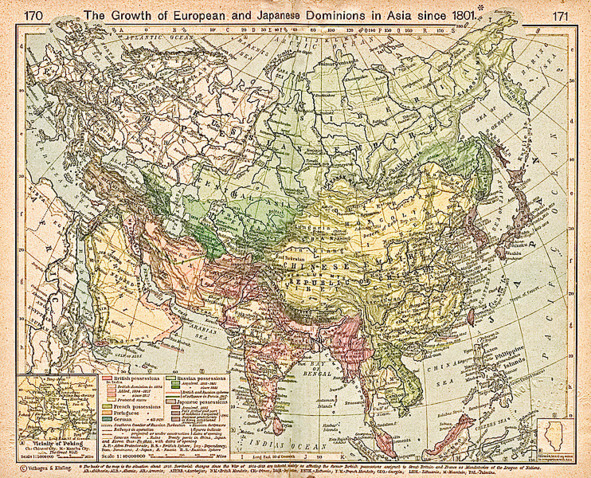
India
Migration to India from Semirechye is possible through the Hindu Kush in Afghanistan, and inevitably wanderers end up in the North of India. To get to the Indian subcontinent, you don’t need to go through the Iranian plateau. You can recall the path of Alexander the Great, who went to India through Bactria, and came exactly to Gandhara.
Ganesha, or Ganapati (Skt. Gaṇeśa)) in Hinduism is the god of wisdom and prosperity. This is one of the most famous and revered gods of the Hindu pantheon. The respectful prefix Sri is often added before his name. One of the popular ways of worshiping Ganesha is chanting Ganesha-sahasranama, “a thousand names of Ganesha”), Brother of Ganesha – Skanda (Kartikeya, Murugan). In the northern part of India, it is believed that the eldest of the brothers is Skanda. In the southern part, the primacy of birth is attributed to Ganesha. Skanda was revered as an important warlike deity from the 5th century BC. e. to VI century AD e. Mass worship of Ganesha began after the decline of the Skanda cult. Ganesha is also the ruler of the Ghana (Shiva’s army-retinue). There is a legend that Ganesha and Skanda (both sons of Shiva) fought for this post, and as a result, Shiva decided that he would be the ruler of the Ghans, who would quickly run around the Galaxy. Skanda immediately jumped off and began his long journey, and Ganesha slowly walked around his parents in a circle, because it was Shiva and Parvati who were the personification of the Galaxy. And after that, Ganesha received the nickname “Ganapati” (lord of the Ghana). And here is the name of SCANDA. As you know, many tribes took their ancestral home from the island of Scandia. Gandhara (also Gandara, Ghandara, Chandhara, Ganghar,) is the northwestern region of Greater India and the name of an ancient kingdom stretching from Pakistan to the eastern provinces of Iran. Gandhara is concentrated around the southern part of the Kabul river valley. In the east, it extends beyond the Indy River and includes the border areas of the Kashmir valley. The historical capital, the city of Taxila, is named after the rajah who fought in alliance with Alexander the Great. The extreme northwestern province of Hindustan (now on the border of Afghanistan with Pakistan) was called Gandharva. Now the sound has changed: Kandahar. The name comes from “the country of Gants, Gant-gar, or now Kandahar, which also translates as the country of Gants, Shiva’s warriors).
The name of the Gandhari is found in the Rigvedea in the Atharvaveda. Gandhars are mentioned in the section of Uttarapathai’s puranas in Buddhist sources. Aytareya Brahmana speaks of the Gandhara king Naganajita, a contemporary of King Janaka of Videha. According to the Mahabharata, the Gandharians took the sides of the Kauravas against the Pandavas in the war and were at the same time brave and sophisticated warriors. In Gandhara, the influence of the culture of the south of Central Asia of the Bronze Age and the Gandhara cave culture, most likely corresponding to the migration of Indo-Aryans to the centers of the Vedic civilization, is traced. The Gandhara culture, or the Gandharian burial culture, or the Swat Valley Culture, or the Swat culture existed in the period 1600—500. BC. in the Gandhara district of Pakistan. Finds related to this culture have been found mainly in burials located along the banks of the Swat and Dir rivers in the north, Taxila in the southeast and Gomal in the south. The found pottery reveals a clear similarity with finds from the same period from Central Asia (Margian civilization) and the Iranian plateau. Archaeological cultures commonly associated with the migration of Indo-Iranian peoples (according to the Encyclopedia of Indo-European Cultures). Most often, the Andronovo, Margian and Yaz cultures are associated with these peoples. And here, in the myths of India, there is a name-Ganta, attributed to the Andronovites Huns (Hans), and is confirmed by gray (Minyan) ceramics.
Vedic literature is characterized by the use of ārya- as a common ethnonym for all Aryan tribes who professed the Vedic religion and opposed to anārya- “non-Aryan”, dasyu-, dasa “enemies-aborigines” (das), mleccha- “barbarian”. In the meaning of “noble”, he united three “twice-born” varnas (brahmanas, kshatriyas and vaisyas), opposed to the sudras as varna of non-Aryan origin. In the meaning of “people” they designated mainly the vaisyas (that is, “common people”) in contrast to the brahmanas and kshatriyas. That is, the actual Aryans, who came to India from China, lived south of the Ganta Gandhara. But numerically, the arty prevailed, but the gants managed to retain their distinctiveness. Ganty are Vaisnavas, and aryas are Saivists, and even their tilaka is different.
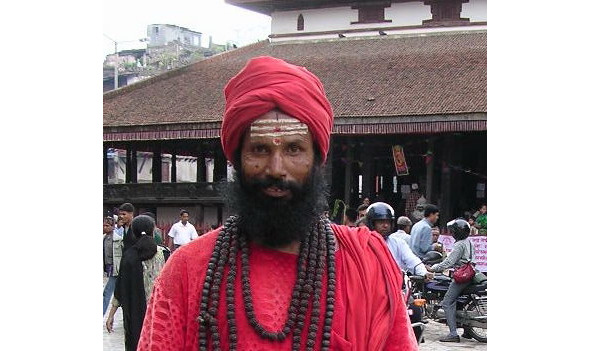
Tilak Shivaists
In the Rig Veda, the ethnonym is mentioned 36 times in 34 hymns. The Aryan world in the Rig Veda includes primarily Sapta Sindhavaḥ (Semirechye, Punjab rivers) and unites 5 large tribes: Anu, Druhyu, Yadu, Turvaśa and Pūru. In the era of the later Vedas, the center of the Indo-Aryans shifted to the east, to present-day Haryana, where the Bhārata tribe rises. The meaning of the word ārya- is increasingly associated with the Vedic religious cult, the concept of vratya- (“apostates”) appears – groups of people of Aryan origin who do not adhere to all the precepts of the Vedas. The tribal names will then be extremely important in the future. And here is the union of SEVEN tribes, no more and no less. Anu, Druhyu, Yadu, Turvaśa and Pūru. Also mentioned are the Bharat and Tritsu tribes. Perhaps this is all seven tribes. India’s official name is now BHARAT.
It is in India that one of the symbols that scientists do not want to see, Urdhva-Pundra, remained. In the Vaishnava tradition, tilaka is called urdhva-pundra. Tila – a small dot that is placed on the forehead – literally means “sesame, sesame.”
“An intelligent person who daily wears the twelve signs of tilaka on his body knows what is religion, dharma, and what is godlessness, adharma. He understands the difference between religious and non-religious principles. One who sees the difference between religious and non-religious principles is called a Vaisnava.”

Urdhva-Pundra on the body of a Vaishnavs
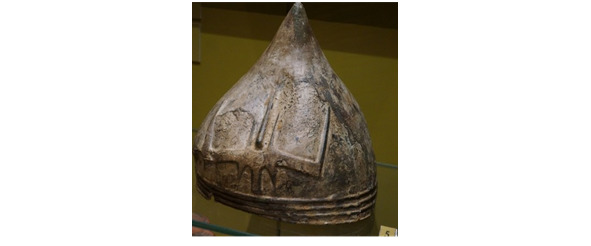
and on the helmets of Urartu
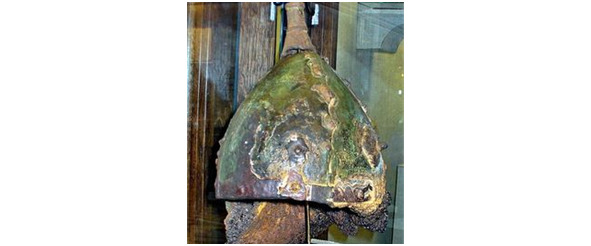
and on the helmets of Rus.
In the Brahmanda Purana it is said, “If a person is impure, lacks proper etiquette, or commits sins in his mind, he always remains pure if he wears tilaka.” The Supreme Lord further states: “Even if a person who adorns his body with tilaka is born in a dog-eating family or leaves his material body in a place other than a holy place, he will go on a heavenly ship to My transcendental abode, where he will enjoy eternal blissful life.” bhakti-vilasa, 4.202).
The tale of Ali Baba was very popular in Europe already in the 18th century. The earliest version of the tale “Ali Baba and the Forty Thieves” is found in the French translation of Galland, who was accused of falsification before the discovery of the original of the tale in Arabic at the beginning of the 20th century. After the death of the merchant, his eldest son Kasim inherits his business and, having married a wealthy woman, succeeds. The youngest son of Ali Baba marries a poor girl and becomes a beggar lumberjack. (A lumberjack in Baghdad is something already. Where is the forest there? This speaks of a borrowed plot, most likely of a more northern origin) Once, collecting brushwood in the forest, Ali Baba accidentally witnesses the conversation of forty robbers. The entrance to the cave, where the looted treasures are kept, is opened with the help of the magic words “Simsim, open” (in the classic translation of Mikhail Salie – “Sesame, open your door”). Having learned this secret, Ali Baba, after the bandits left, enters the cave and takes with him a bag of gold coins.
Mardjana is also mentioned in the tale, probably Margiana. That is, in the original, the action may be tied to Central Asia. Kasim enters the cave, but the robbers kill him.
So SESAME. Tilaka or tilak (tilaka IAST) is a sacred sign that the followers of Hinduism apply with clay, ash, sandalwood paste or other substance on the forehead and other parts of the body. The types of tilaka differ among followers of different directions of Hinduism and, among other things, serve as an identification mark, speaking of belonging to one or another religious tradition. Tilaka can be applied daily or only on special occasions.
“Urdhva” means “up” and “pundra” means “light”, therefore, applying tilak is a way to remind, first of all, to oneself, about one’s values and goals. In the Vaishnava tradition, tilaka is called urdhva-pundra. Tila – a small dot that is placed on the forehead – literally means “sesame, sesame.” here there is an association with the tale of Ali Baba and 40 robbers. The tale shows the philosophical overtones of the sesame, the password for entering the cave with riches is only possible for the bearer of Tilaki. There is Tilaka on your forehead – you will enter the Kingdom of Heaven, there is no Tilaka or you have forgotten about it, its true meaning – the passage to the Golden Kingdom is closed for you).
Iran
It must be remembered that “Aryans” is a self-name and scientific designation only for Indo-Iranian peoples. Arians (Avest. Airya-, Old-Ind. Ā́rya-, Old Persian ariya-) or Aryans (also Indo-Iranians) – the name of the peoples speaking the languages of the Aryan (Indo-Iranian) group of the Indo-European family, derived from the self-name of the historical peoples of the Ancient Iran and Ancient India (II – I millennium BC). The linguistic and cultural affinity of these peoples makes researchers assume the existence of an original Pra-Aryan community (ancient Aryans), the descendants of which are the historical and modern Iranian and Indo-Aryan peoples.
But, as you can see, the Aryans are at some distance from the Andronovites-gans (gants). Those who came to China, India, and reached Europe. Toponymy with word formation from the ethnonym Aryan in Europe is vanishingly small, as is the mention of the Aryans in the form of forefathers, ancestor spirits. In Europe, in the form of forefathers, spirits, only manna and huns are present.
In linguistics, the Aryans (or Indo-Iranians) mean only two groups of Indo-Europeans: all peoples speaking the languages of the Indo-Aryan group, and all Iranian-speaking peoples. The ancestral home of the Aryans, according to some assumptions, was located between the Dniester and Ural rivers (Yamnaya culture).
The Iranian group of peoples includes modern Ossetians, Persians, Tajiks, Afghans, Kurds, Baluchis and some other peoples. All of them speak languages derived from the common Iranian language-base, which in the II millennium BC. spoke the Iranian Aryans.
At the end of the 2nd millennium BC. the Iranian community split into two groups of tribes. Northern Iranians included the ancestors of the Scythians, Sogdians, Bactrians, Khorezmians. The southern group of tribes included the ancestors of the Medes, Persians, Kurds, Baluchis, and other Iranian peoples. This group of tribes can be called southern because they left the European ancestral home to the south and occupied the Iranian Highlands, that is, the territory of the modern states of Iran and Afghanistan. But the northern Iranians also went far beyond the boundaries of the Aryan ancestral home. The Bactrians, Sogdians, Khorezmians advanced to Central Asia.
Vedic literature is characterized by the use of ārya- as a common ethnonym for all Aryan tribes who professed the Vedic religion and opposed to anārya- “non-Aryan”, dasyu-, dasa “enemies-aborigines” (das), mleccha- “barbarian”. In the meaning of “noble”, he united three “twice-born” varnas (brahmanas, kshatriyas and vaisyas), opposed to the sudras as varna of non-Aryan origin. In the meaning of “people” they designated mainly the vaisyas (that is, “common people”) in contrast to the brahmanas and kshatriyas.



